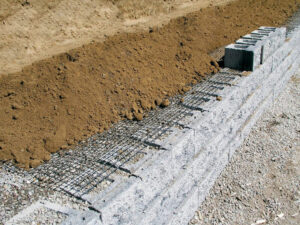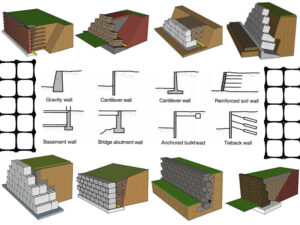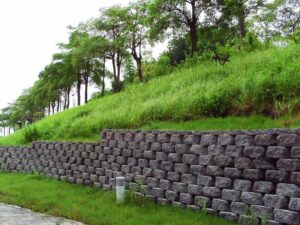Geomembrane Used For Impermeable, Waterproofing, Drainage
Impermeable, waterproofing, and drainage are critical water management measures in engineering. For example, they prevent water from seeping into underground structures, control the discharge of surface water, and stop pollutants from entering groundwater. These common applications for impervious, waterproofing, and drainage are often found in reservoirs, underground parking lots, landfills, tunnels, and other similar locations.
And geomembrane liners are the best materials for achieving these critical water management measures. Geomembrane liners come in three types: HDPE, LLDPE, and composite (a combination of geomembrane and geotextile). They all have excellent effectiveness in preventing liquids from seeping into underground structures, soil, and groundwater. In drainage systems, geomembrane liners are the best products for controlling water flow.
Therefore, whenever you want to achieve functions such as impermeable, waterproofing, or drainage, geomembrane sheets can be used to accomplish the task.
Waterproofing & Impermeable Geomembrane Types By Material
Geomembranes are primarily categorized into three types: HDPE, LLDPE, and composite (a combination of geomembrane and geotextile). Each type has its own distinct characteristics, functions, and applications. Click the button below to learn more about the products.
HDPE Geomembrane
Composite Geomembrane
LLDPE Geomembrane
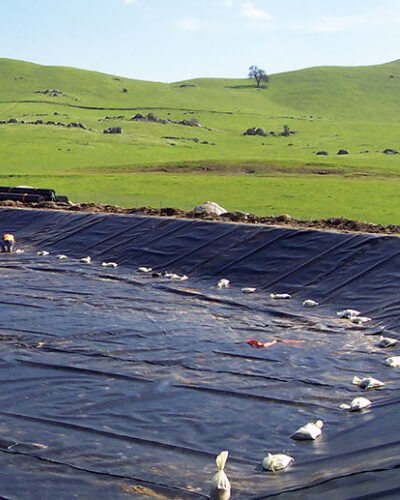
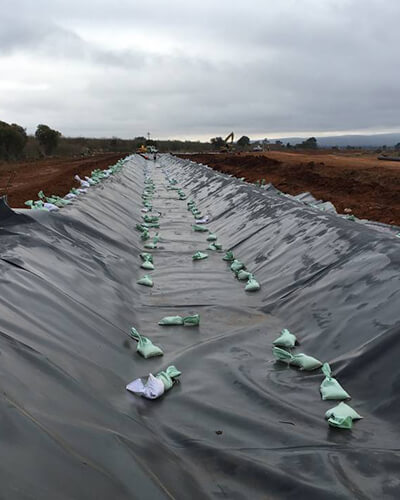
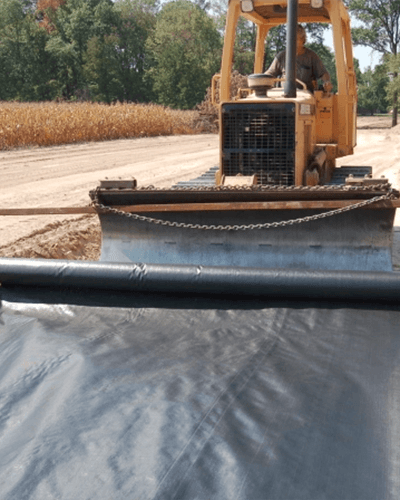
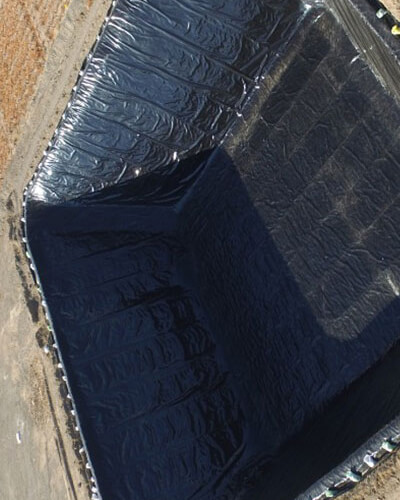
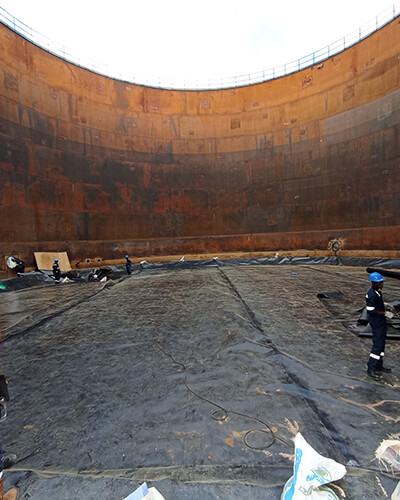
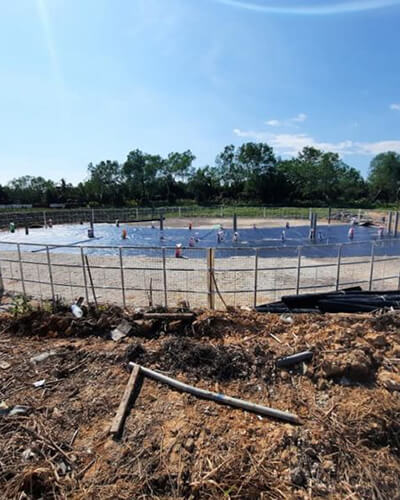
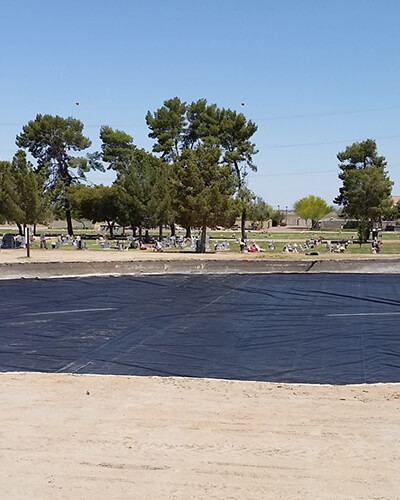
The Multifunctionality of Geomembranes: The Perfect Combination of Waterproofing, Impermeable, and Drainage Systems
Geomembranes, particularly HDPE membranes, have extremely low permeability, effectively waterproofing.
Their molecular structure determines their impermeable, ensuring their use as strong barriers in environmental projects like reservoirs, landfills, and sewage treatment ponds.
These membranes block water, pollutants, and heavy metals, protecting groundwater and soil.
Additionally, geomembranes provide waterproofing for basements, tunnels, and rooftops, with added UV resistance for long-term durability.
Combined with geotextiles, they enhance drainage by expelling water and gases, which is crucial for slope protection and foundation drainage systems.
In terms of seepage control, geomembranes have an extremely low permeability coefficient, effectively preventing liquid infiltration. Taking HDPE impermeable membranes as an example, according to ASTM D methods, the methane permeability results and data are 2.010-5 ml/cm²·s, and the water vapor permeability results and data are 2.010-5 ml/cm²·s.
Due to the fact that polyethylene is composed of very long molecules, there are indeed molecular spaces between individual polyethylene chains. While polyethylene is essentially considered impermeable, the existence of these spaces is acknowledged. Permeation can still occur, but only when the pressure of the permeant is extremely high or when the permeant’s molecules are very small. Therefore, HDPE impervious liners can serve as effective barriers against many types of substances.
In environmental engineering projects such as reservoirs, dams, landfills, sewage treatment ponds, and tailings ponds, impermeable is a key focus. Due to their low permeability coefficient and strong impermeable capabilities, geomembranes effectively prevent water, pollutants, heavy metals, and other substances from entering groundwater and soil. This ensures the safety of the surrounding environment and the smooth progress of the project.
In terms of waterproofing, geomembrane liners act as an effective barrier, completely preventing moisture from infiltrating buildings or infrastructure. For example, in projects such as basements, tunnels, rooftop gardens, and water tanks, simply laying a layer of HDPE waterproof geomembrane liner over the soil can fully block water molecules from penetrating. Additionally, during the manufacturing process, geomembranes are enhanced with antioxidants and other additives to improve their overall performance. As a result, geomembrane liners also have strong UV resistance, ensuring stability and effectiveness in long-term waterproofing applications, even when exposed to the elements for extended periods.
Drainage is one of the additional functions provided by geomembranes. In drainage systems, especially in projects where excess moisture needs to be removed or water flow needs to be controlled, the waterproofing and seepage control properties of geomembranes liner work effectively in combination with materials like geotextiles and drainage sheets to form a powerful and efficient drainage system. For instance, the combination of geomembranes and geotextiles can significantly enhance drainage and ventilation capabilities. Geotextiles improve drainage by allowing seepage water, pore water, and gases behind the membrane to be expelled, preventing the membrane from being lifted and destabilized by water and gas pressure. When the foundation is soil-based, this combination can also accelerate the drainage and consolidation of the underlying soft soil.
Therefore, geomembrane liners (Especially HDPE waterproofing and impermeable membrane) play a crucial role in slope protection, tunnel waterproofing and drainage, foundation drainage systems, and more. They ensure that water flow is effectively directed away from critical structural areas, thereby protecting the integrity of these structures.
Which Type of Geomembrane Liner Should be Used For Impermeable, Waterproofing and Drainage in the Project?
The selection of a geomembrane liner for a project should be based on specific project requirements, terrain conditions, and budget considerations.
HDPE waterproofing membrane liners are ideal for projects that require high strength and chemical resistance.
LLDPE geomembrane liners are better suited for scenarios where high flexibility is needed.
Composite geomembrane liners excel in multifunctionality and perform best in complex environments.
To simplify the installation process, you can also opt for a self-adhesive HDPE waterproof membrane.
Therefore, you can make a simple selection based on the following considerations.
Project Requirement Analysis
Impermeable Needs: If the primary need of the project is to prevent liquid infiltration, such as in reservoirs, landfills, or tailings ponds, choosing a HDPE impermeable geomembrane with an extremely low permeability coefficient is crucial.
Waterproofing Needs: In situations where it’s essential to prevent moisture from entering buildings or structures, such as basements, tunnels, and rooftop gardens, the waterproofing performance becomes the key factor.
Drainage Needs: For projects where effective water guidance and removal are necessary, such as slope protection and underground drainage systems, the drainage capabilities of the geomembrane and its compatibility with other drainage materials should be a primary consideration.
Selection of Geomembrane Liner Types
High-Density Polyethylene Geomembrane
Preferentially used in projects that require extremely strong anti-seepage performance and durability, such as landfills, anti-seepage liners, large reservoirs, and tailings ponds.
The advantages are excellent anti-seepage effect and strong durability. The disadvantages are relatively rigid, weak ability to adapt to terrain changes, and higher precision is required during construction.
Linear Low-Density Polyethylene Geomembrane
Suitable for anti-seepage projects in aquaculture ponds, sewage treatment plants, waste treatment sites, and complex terrain, especially in areas with settlement or deformation.
The advantages are easier construction and strong ability to adapt to terrain. The disadvantages are slightly lower chemical resistance and UV resistance than HDPE.
Composite geomembrane
It is mostly used in water conservancy projects (such as dams, anti-seepage channels), transportation projects (such as highways and railway roadbeds) and environmental protection projects. It has strong adaptability and is suitable for projects with multi-functional needs.
The advantages are its diverse functions, being both anti-seepage and drainage and being able to withstand greater stress. The disadvantages are that the cost may be higher and the construction complexity increases.
Environmental Considerations
Chemical Environment: If the project is located in an area with high exposure to chemicals or pollutants, such as industrial wastewater treatment plants or near chemical factories, HDPE geomembrane liner is the best choice due to its excellent chemical resistance.
Climate Conditions: In environments with high UV radiation, extreme temperatures, or severe cold, it’s essential to select a geomembrane with good UV resistance and temperature tolerance. While HDPE membranes are highly durable, they can degrade when exposed to prolonged sunlight, making them less suitable for unshielded environments.
Geological Conditions: For complex terrains, areas with uneven settlement, or regions with seismic risk, geomembranes with better flexibility, such as LLDPE membranes or composite geomembranes, are more suitable as they reduce the risk of damage to the membrane.
Construction and Cost Price Efficiency
Construction Difficulty: Selecting geomembranes that are easier to install and more adaptable, such as LLDPE, can reduce the technical challenges and construction time. Due to its rigidity, HDPE requires higher technical expertise during installation. However, self-adhesive HDPE waterproof geomembranes can lower construction difficulty, and the purchase price is cheap. Saving contractors time and money. These quick and easy-to-install self-adhesive membranes do not require special tools, making them an option worth considering.
Economic Analysis: The project’s budget should weigh the cost of different materials against their lifespan. While HDPE may have a higher upfront cost, its long service life and low maintenance requirements can result in greater long-term economic benefits. For smaller-scale projects with limited budgets, LLDPE may offer a more cost-effective solution.
Comprehensive Recommendations Based on the Above Considerations
High-Strength impermeable Projects: If optimal seepage control is required, especially for long-term projects in complex chemical environments, HDPE impervious geomembrane is the best choice due to its superior performance and durability.
Complex Terrain and Settlement Projects: For projects that need to adapt to complex terrains or where significant settlement is expected, LLDPE geomembrane liner or composite geomembrane liner would be better choices, offering greater flexibility and durability.
Combined Drainage and Seepage Control Projects: For projects that require both seepage control and drainage, composite geomembrane is the ideal solution. It can meet both functions effectively, making it suitable for scenarios with multifunctional requirements.
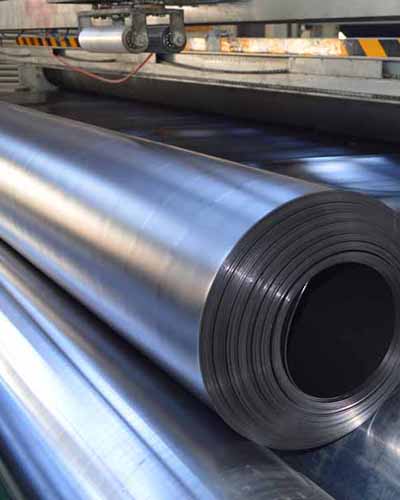
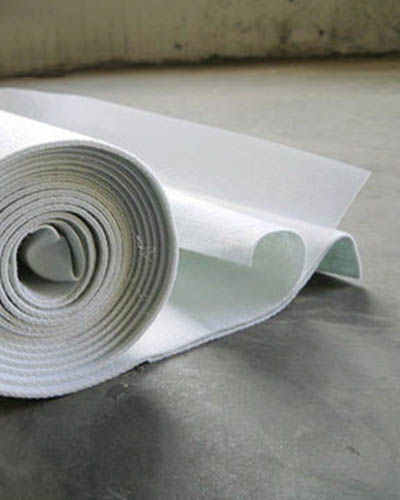
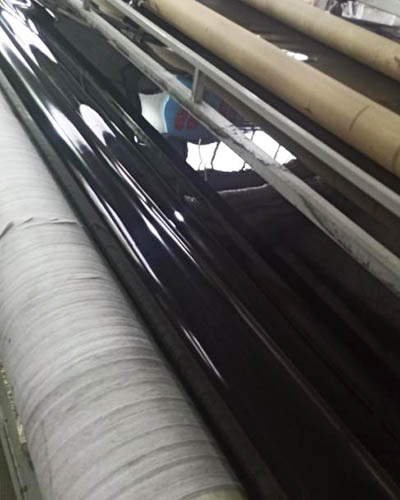
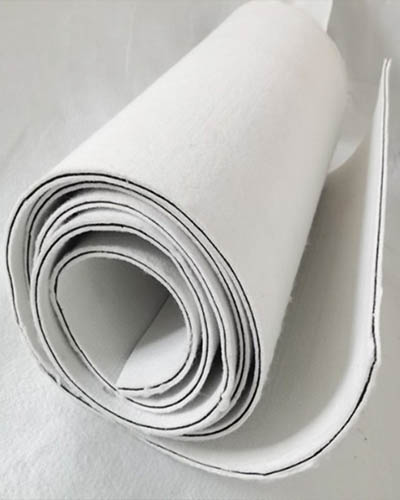
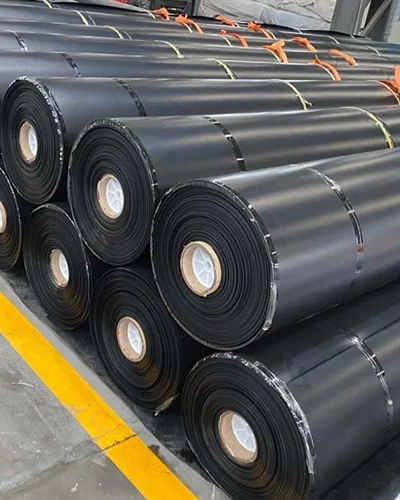
Recent Projects
Discover our recent client projects and explore the range of tailored, personalized support we provide. Share your requirements and receive the ideal solution.
Recent Company News
Explore our newest releases, stay informed with industry updates on geosynthetics & geocomposite, and delve into technical insights about geotechnical products. For any queries, reach out to us for customized assistance.
Frequently Asked Questions
The following factors need to be considered when determining the purchase quantity of geomembrane liner:
The complexity of the terrain of the project, such as walls, slopes, etc.
The reserved loss ratio.
The additional requirement for joint treatment, the overlap width of the joints between membranes is generally not less than 10cm.
This ensures that there is no shortage and material waste.
Of course, you can tell QIVOC the detailed project data, and we will calculate the required purchase quantity for your reference based on the data.
When purchasing geomembranes, you can ask the manufacturer or supplier whether the geomembranes sold meet ASTM, ISO and other data standards, and check the relevant test certificates.
Or you can ask the manufacturer or supplier for samples and have them tested by a professional testing agency to ensure the reliability of their quality.
Click to view the Overview of Tensile Test Methods for QIVOC Geosynthetics
Geotextile rolls should be protected from damage before installation and unrolling.
For example: it should be stacked in a flat, non-stagnant place, the stack height should not exceed four rolls, and the roll identification card should be visible.
It should be covered with opaque material to prevent aging due to ultraviolet rays, and it should keep the labels and information intact during storage.
If geomembranes are transported in folding boxes, wooden boxes with nails should not be used to prevent damage during transportation, and care should be taken to prevent damage to the surface of the rolls during loading and unloading.
When selecting a geomembrane supplier, the following key criteria should be considered:
- Product quality: Able to provide the corresponding quality inspection certificate, and the sample inspection provided is also qualified.
- Supplier qualifications: A real manufacturer or supplier, able to provide a professional qualification certificate, factory visit service, etc.
- Past project experience: Various engineering cases
- Product technical support: Have professional technicians, such as providing welding guidance, etc.
- After-sales service: 24/7 after-sales service, and be able to contact after-sales service personnel at any time.
- Supply capacity: Detailed understanding of the supplier’s production capacity, equipment status, inventory management capabilities, etc.
By understanding the above key indicators, I believe you can find a suitable geomembrane supplier.
When facing geomembrane products of different types and brands, while considering the material cost, you also need to balance factors such as the durability, construction convenience, and maintenance cost of the geomembrane to ensure the long-term benefits of the project.
Therefore, you need to comprehensively consider the quality and cost price of the product to determine the most cost-effective supplier.

